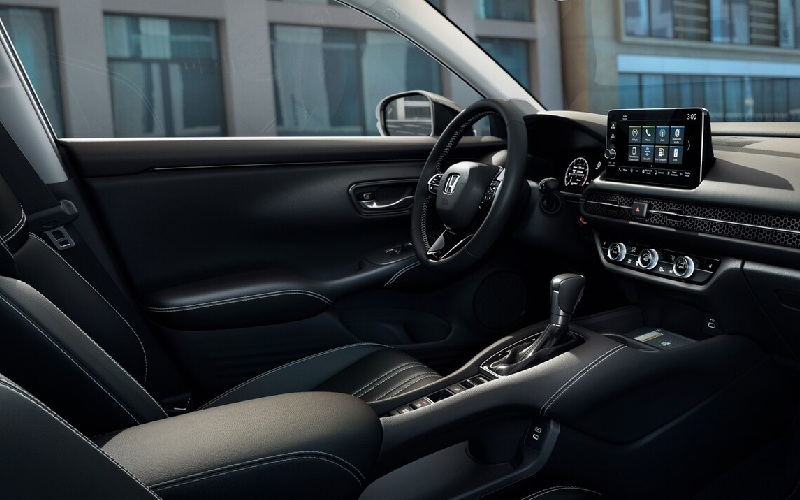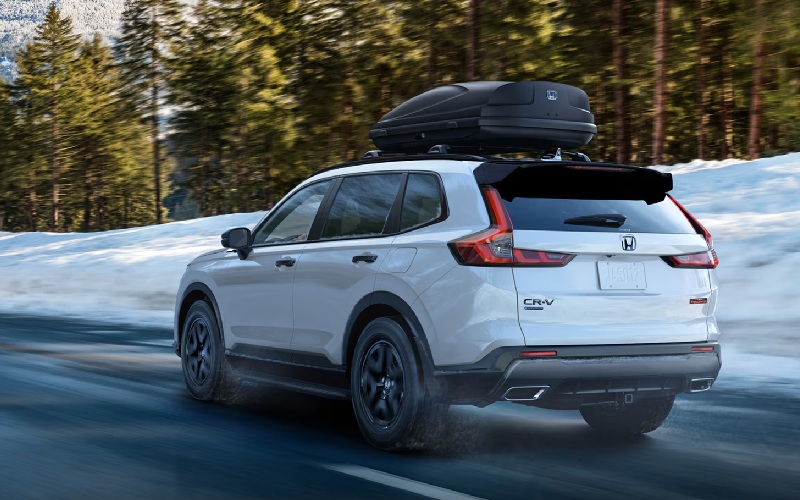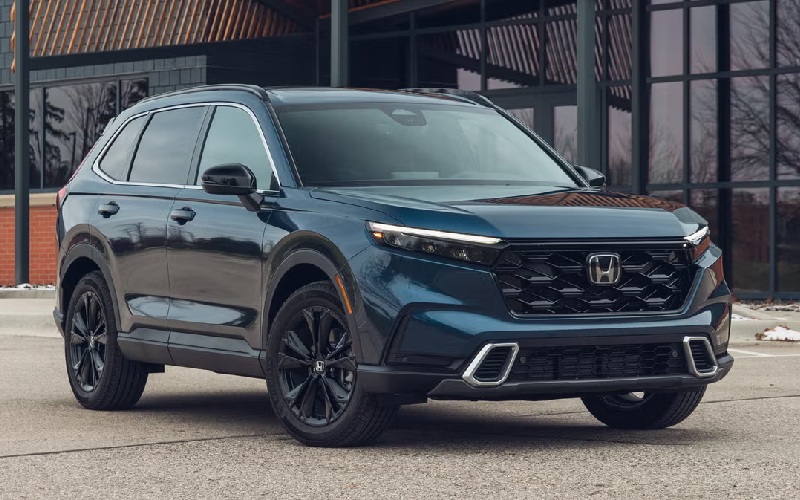Proper wheel and tire maintenance is one of the most critical aspects of vehicle care that directly impacts safety, performance, fuel efficiency, and comfort. For Honda owners, understanding the specifics of wheel and tire care ensures your vehicle performs optimally in all driving conditions. This comprehensive guide covers everything owners need to know about maintaining wheels and tires throughout the seasons.

The Foundation of Vehicle Performance
Wheels and tires are the only points of contact between your car and the road. They absorb road imperfections, transfer engine power to the ground, enable steering control, and provide the friction needed for braking. Their importance cannot be overstated, as they directly influence:
- Vehicle handling and stability
- Braking distance and effectiveness
- Ride comfort and noise levels
- Fuel efficiency and emissions
- Overall safety in all driving conditions
Honda Wheel and Tire Specifications
Each Honda model has specific recommendations that complement the vehicle’s weight, power, suspension, and intended use.
Original Equipment Specifications
Honda vehicles sold in the domestic market typically feature sizes ranging from 16-inch on the base Civic models to 20-inch on premium trims of the Pilot and Passport. The CR-V, one of the most popular models, generally comes with 17-inch or 18-inch wheels, depending on the trim level.
Tire sizes follow a standardized format that includes:
- Width (in millimeters)
- Aspect ratio (percentage of width to sidewall height)
- Construction type (R for radial)
- Diameter (in inches)
- Load index and speed rating
For example, a common size for the Honda CR-V might be P235/65R17 104H, where:
- 235 represents the width in millimeters
- 65 indicates that the height is 65% of the width
- R means radial construction
- 17 is the diameter in inches
- 104 is the load index (how much weight the tire can support)
- H is the speed rating (the maximum safe speed)
Performance Considerations
Different models prioritize different performance aspects:
- Civic models often focus on responsive handling with lower-profile options
- CR-V and HR-V models balance comfort and all-weather capability
- Pilot and Passport models emphasize stability, load-carrying capacity, and light off-road capability
- Ridgeline prioritizes durability and load capacity
Seasonal Tire Considerations
The domestic climate requires specific strategies for optimal safety and performance.
Winter Tires
When temperatures consistently fall below 7°C, winter options provide significant safety advantages:
- Specialized Rubber Compounds: Winter options maintain flexibility in cold temperatures, while all-season and summer options harden and lose traction.
- Tread Patterns: Aggressive tread designs with deeper grooves and numerous sipes (small slits) bite into snow and slush while channeling away water and slush.
- Performance Difference: Winters can improve braking distance on snow and ice by up to 40% compared to all-season options.
- Identification: Look for the “Three-Peak Mountain Snowflake” symbol, which indicates tires that meet specific snow traction performance requirements.
For Honda CR-V, HR-V, and other SUV models, winter options in appropriate sizes provide essential traction in challenging winter conditions.
All-Season Tires
Most Honda vehicles come equipped with all-seasons from the factory, offering a balance of:
- Year-Round Versatility: Adequate performance in moderate conditions throughout the year.
- Longevity: Typically provides 65,000-100,000 kilometers of tread life depending on driving habits and maintenance.
- Comfort: Generally quieter and provides a smoother ride than specialized tires.
- Limitations: Compromises performance at temperature extremes compared to season-specific options.
All-season options work well for owners who experience mild winters and moderate driving conditions.
Summer Tires
Performance-oriented models like the Civic Si and Type R often come with summer options that provide:
- Enhanced Grip: Superior cornering and braking performance in dry and wet conditions above 7°C.
- Responsive Handling: Stiffer sidewalls and specialized rubber compounds improve steering response.
- Seasonal Limitations: Not suitable for use in near-freezing temperatures or snow.
Summer options are ideal for owners who prioritize warm-weather performance and store their vehicles during winter.
Essential Maintenance
Regular maintenance significantly extends life and maintains safety margins.
Proper Inflation
Perhaps the most critical yet often neglected aspect of maintenance is maintaining correct air pressure:
- Pressure Specifications: Honda recommends pressures on a label inside the driver’s door jamb. Depending on the model and size, these typically range from 220 kPa (32 PSI) to 250 kPa (36 PSI).
- Checking Frequency: Pressure should be checked monthly and before long trips. Remember that pressure should be checked when they are cold (not driven for at least three hours).
- Seasonal Adjustments: Air pressure naturally decreases in cold weather, approximately 7 kPa (1 PSI) for every 5.5°C temperature drop. Winter adjustments may be necessary.
- Impact of Incorrect Pressure: Underinflated tires increase rolling resistance, reducing fuel economy by up to 10%. They also wear out more quickly on the outer edges and can overheat. Overinflated tires provide a harsher ride and wear more in the center of the tread.
- TPMS System: Most Honda models feature Tire Pressure Monitoring Systems that alert drivers when pressure drops significantly below recommended levels. However, these typically only warn when pressure is below optimal, so regular manual checks remain important.
Rotation Patterns
Regular rotation ensures even wear and maximizes tire life:
- Frequency: Honda recommends rotating tires every 8,000-12,000 kilometers, often coinciding with oil change intervals.
- Patterns: The appropriate rotation pattern depends on the vehicle:
- Front-wheel-drive Honda models (most Civic and Accord models): Forward cross or X-pattern
- All-wheel-drive models (available on CR-V, HR-V, Passport, Pilot): X-pattern rotation
- Directional: Front-to-back only, keeping them on the same side
- Benefits: Regular rotation can extend life by up to 20% by ensuring wear is distributed evenly across all four tires.
Alignment Service
Wheel alignment involves adjusting the angles of the wheels to manufacturer specifications:
- Symptoms of Misalignment: Vehicle pulling to one side, uneven or rapid wear, off-center steering wheel when driving straight.
- Check Frequency: Honda recommends checking alignment annually and after significant impacts like hitting potholes or curbs.
- Alignment Types:
- Front-end alignment (most common)
- Four-wheel alignment (recommended for AWD models)
- Critical Angles:
- Camber: The inward or outward angle of the tire when viewed from the front
- Caster: The angle of the steering pivot when viewed from the side
- Toe: The direction the tires point relative to the centerline of the vehicle
Proper alignment extends life and improves handling, straight-line stability, and fuel efficiency.
Balancing
Balancing ensures weight is distributed evenly around the wheel:
- Symptoms of Imbalance: Vibration at specific speeds, typically felt in the steering wheel (front wheels) or seat (rear wheels).
- When to Balance: During installation and rotation, or when you notice vibrations.
- Methods:
- Static balancing: Corrects up-and-down heavy spots
- Dynamic balancing: Addresses both side-to-side and up-and-down weight distribution
Properly balanced tires reduce vibration, improve comfort, and prevent premature wear of suspension components.
Wheel Care and Maintenance
Alloy wheels require specific care to maintain both appearance and performance:
- Regular Cleaning: Clean wheels every two weeks using a pH-neutral cleaner specially formulated for wheels. Avoid acidic cleaners that can damage the finish.
- Seasonal Protection: Apply sealant or wax at the beginning of each season to protect against brake dust, road salt, and environmental contaminants.
- Inspection: Regularly check for cracks, bends, or other damage that could lead to air leaks or handling issues.
- Valve Stems: Replace valve stems when installing new tires, as they deteriorate over time and can cause slow leaks.
- Lug Nuts/Bolts: Check torque during rotation service to ensure proper tightening—neither too loose (safety risk) nor too tight (can warp rotors or damage studs).
Special Considerations for Honda Models
Different models have specific considerations:
Honda Civic
The Civic lineup features various sizes depending on trim:
- Civic Sedan: Typically 16-inch to 18-inch
- Civic Hatchback: Usually 16-inch to 18-inch
- Civic Si: 18-inch with performance-oriented tires
- Civic Type R: Distinctive 19-inch or 20-inch with high-performance summer options
Lower profile tires on sportier Civic models require extra caution around potholes and road hazards due to reduced sidewall protection.
Honda CR-V and HR-V
These popular crossovers generally feature:
- CR-V: 17-inch or 18-inch wheels
- HR-V: 16-inch to 18-inch wheels
Their higher ground clearance and all-wheel-drive options (when equipped) provide good versatility, but they still benefit significantly from winter options in snowy conditions.
Honda Pilot and Passport
Larger Honda SUVs come with:
- Pilot: 18-inch to 20-inch wheels
- Passport: 20-inch wheels on most trims
These vehicles’ heavier weight requires tires with appropriate load ratings, particularly when towing or carrying full passenger loads.
Honda Ridgeline
The Ridgeline pickup typically features 18-inch or 20-inch wheels that balance on-road comfort with light off-road capability and load-carrying capacity. Pressure is significant when hauling or towing.
Common Wheel and Tire Issues
Tire Wear Patterns and Diagnosis
Wear patterns provide valuable diagnostic information:
- Center Wear: Indicates overinflation
- Edge Wear: Suggests underinflation
- One-Sided Wear: Points to alignment issues (likely camber or toe problems)
- Cupping or Scalloped Wear: Indicates suspension problems or balance issues
- Feathering: Often caused by alignment problems, particularly incorrect toe setting
Early diagnosis of abnormal wear patterns allows corrective action before they need replacement.
Puncture Repair Guidelines
Not all punctures can be safely repaired:
- Repairable Punctures: Those in the central tread area, measuring less than 6mm in diameter.
- Non-Repairable Damage: Punctures in the sidewall, shoulder areas, or larger punctures should result in replacement.
- Proper Repair Method: Patch-plug combination from the inside of the tire is the only recommended repair method for Honda vehicles.
Temporary spares (“donuts”) found in many Honda models have specific limitations:
- Speed Restriction: Typically limited to 80 km/h
- Distance Limitation: Designed for temporary use only (less than 80 kilometers)
- Inflation: Requires higher inflation pressure than standard tires (typically 420 kPa/60 PSI)
When to Upgrade Wheels and Tires
When considering upgrades, Honda owners should understand:
Plus-Sizing Guidelines
Plus-sizing involves installing larger diameter wheels with lower-profile tires while maintaining the original overall diameter:
- Benefits: Improved handling, enhanced appearance
- Considerations: Potentially firmer ride, increased vulnerability to road hazards
- Limits: Honda vehicles typically accommodate a 1-2 inch increase in wheel diameter from original specifications
Performance Tire Categories
Performance tires are classified by increasing levels of grip and decreased tread life:
- Grand Touring: Balance of performance and comfort
- High Performance (HP): Improved handling with moderate tread life
- Ultra-High Performance (UHP): Maximum grip with shorter tread life
Performance-oriented models like the Civic Si and Type R benefit most from higher-category tires.
Plan for Replacement
Knowing when to replace tires is critical for safety:
- Tread Depth Indicators: Built-in bars become visible when tread reaches 1.6mm depth, indicating replacement is legally required.
- Seasonal Considerations: Winter options become significantly less effective when worn to 50% of their original tread depth (typically 4mm).
- Age Limits: Even with adequate tread, you should replace tires after 6 years due to rubber degradation.
- Full Sets: Replacing all four tires simultaneously ensures proper system operation for AWD Honda models.
By understanding and implementing these maintenance practices, Honda owners can maximize safety, performance, and value from their vehicles’ critical components. Regular service at Honda dealerships ensures that specialized equipment and trained technicians provide optimal care for these essential vehicle systems.
Questions and Answers
How often should I rotate the tires on my Honda CR-V?
- You should rotate every 8,000-12,000 kilometers, which typically aligns with your regular oil change interval. Regular rotation ensures even wear across all four tires and can extend life by up to 20%. For models with All-Wheel Drive, an X-pattern rotation is recommended.
What tire pressure should I maintain in my Honda vehicle?
- The recommended pressure for most vehicles ranges from 220 kPa (32 PSI) to 250 kPa (36 PSI), depending on the specific model and size. You can find the exact specification on a label inside the driver’s door jamb or in your owner’s manual. Remember to check pressure when tires are cold and to adjust seasonally as temperatures change.
Can I mix winter and all-season tires on my Honda?
- No, mixing types is not recommended. Installing only two winter options can create dangerous handling imbalances. All four tires should be the same type (winter, all-season, or summer) to ensure predictable handling and optimal safety. This is especially important for models with All-Wheel Drive systems.
How do I know when my Honda tires need replacement?
- You should replace them when the tread depth reaches 1.6mm (as indicated by the wear bars becoming visible across the tread). However, winter performance significantly deteriorates below 4mm of tread depth. Additionally, inspect for signs of damage, irregular wear, or aging (cracks in the sidewall). Generally, even tires with adequate tread should be replaced after six years due to rubber degradation.
What should I do if my Honda Tire Pressure Monitoring System (TPMS) light comes on?
- When the TPMS light illuminates, check all pressures as soon as safely possible. Inspect one at a time carefully for punctures or damage if it is significantly lower than the others. After inflating to the recommended pressure (found on the driver’s door jamb), the light should turn off after driving for a short distance. If the light remains on or flashes, there may be a system malfunction requiring service at your Honda dealership.




